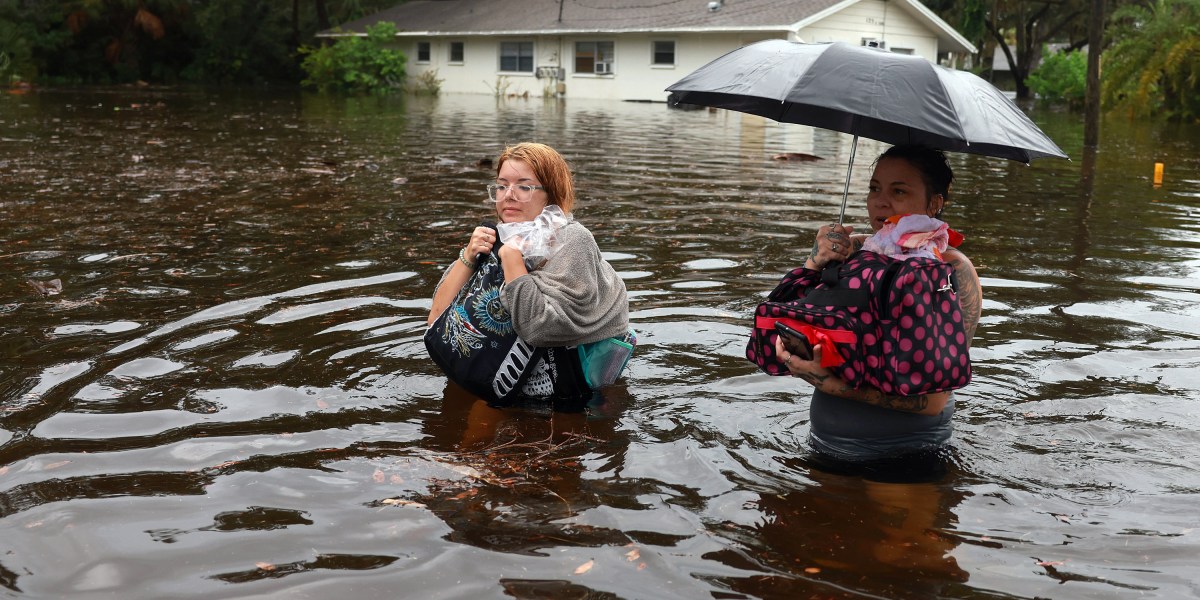How climate change can supercharge hurricanes

So even though I live in the Northeast now, by the time late August rolls around I’m constantly on hurricane watch. And while the season has been relatively quiet so far, a storm named Idalia changed that, hitting the coast of Florida this morning as a Category 3 hurricane. (Also, let’s not forget Hurricane Hilary, which in a rare turn of events hit California last week.)
Tracking these storms as they’ve approached the US, I decided to dig into the link between climate change and hurricanes. It’s fuzzier than you might think, as I wrote about in a new story today. But as I was reporting, I also learned that there are a ton of other factors affecting how much damage hurricanes do. So let’s dive into the good, the bad, and the complicated of hurricanes.
The good
The good news is that we’ve gotten a lot better at forecasting hurricanes and warning people about them, says Kerry Emanuel, a hurricane expert and professor emeritus at MIT. I wrote about this a couple of years ago in a story about new supercomputers being adopted by the National Weather Service in the US.
In the US, average errors in predicting hurricane paths dropped from about 100 miles in 2005 to 65 miles in 2020. Predicting the intensity of storms can be tougher, but two new supercomputers, which the agency received in 2021, could help those forecasts continue to improve too. The computers were recently used to upgrade the agency’s forecasting model for this hurricane season.
Supercomputers aren’t the only tool forecasters are using to improve their models, though—some researchers are hoping that AI could speed up weather forecasting, as my colleague Melissa Heikkilä wrote earlier this summer.
Forecasting needs to be paired with effective communication to get people out of harm’s way by the time a storm hits—and many countries are improving their disaster communication methods. Bangladesh is one of the world’s most disaster-prone countries, but the death toll from extreme weather has dropped quickly thanks to the nation’s early warning systems.
The bad
The bad news is that there are more people and more stuff in the storms’ way than there used to be, because people are flocking to the coast, says Phil Klotzbach, a hurricane researcher and forecaster at Colorado State University.
The population along Florida’s coastline has doubled in the past 60 years, outpacing the growth nationally by a significant margin. That trend holds nationally: population growth in coastal counties in the US is happening at a quicker clip than in other parts of the country.




